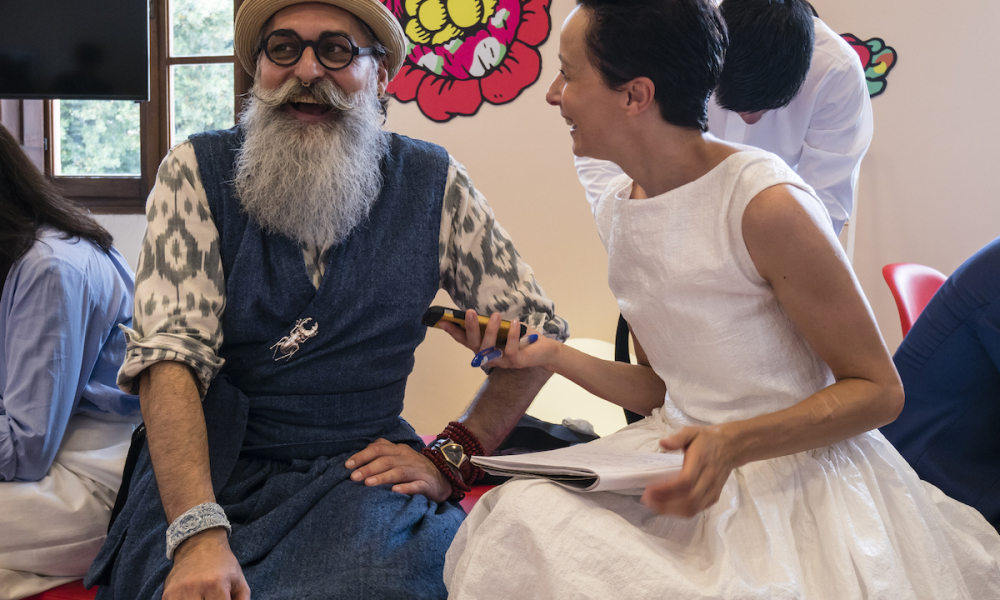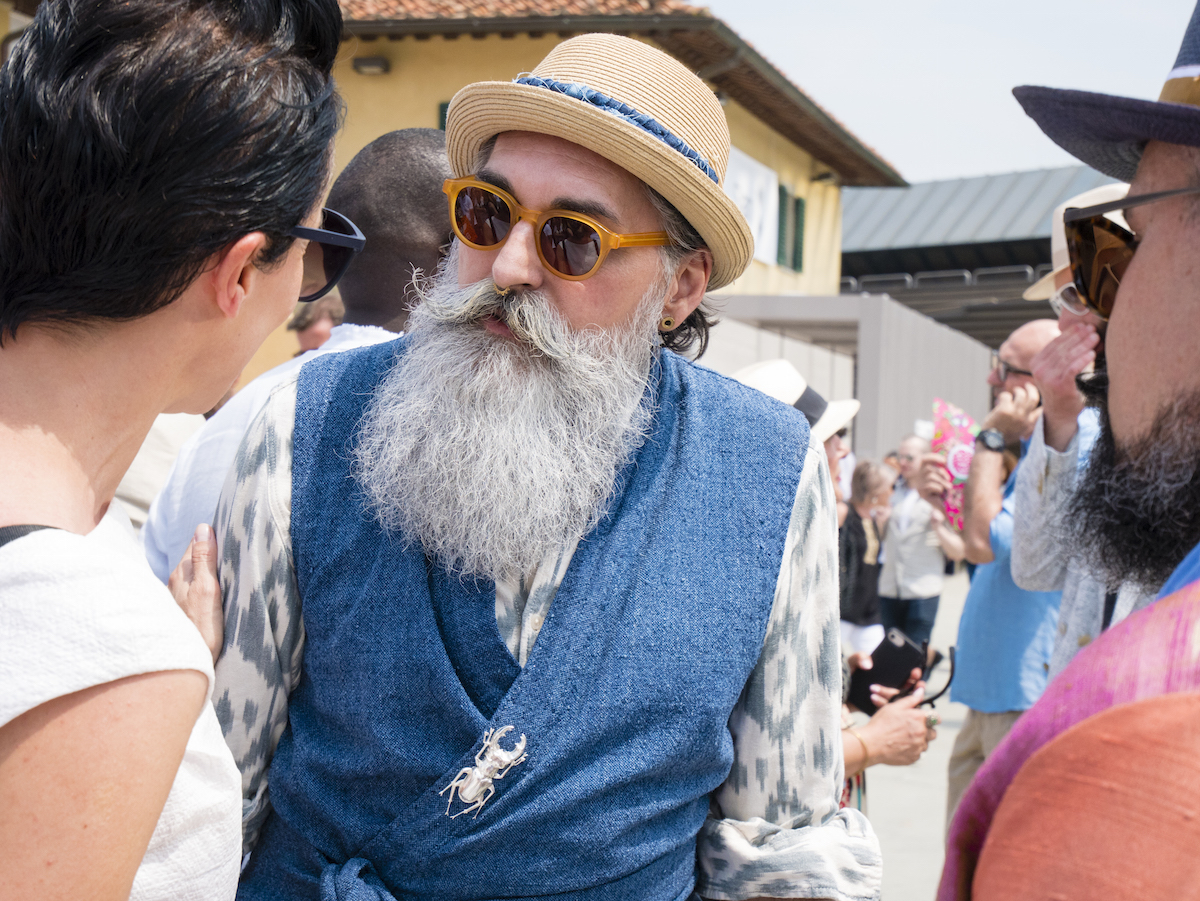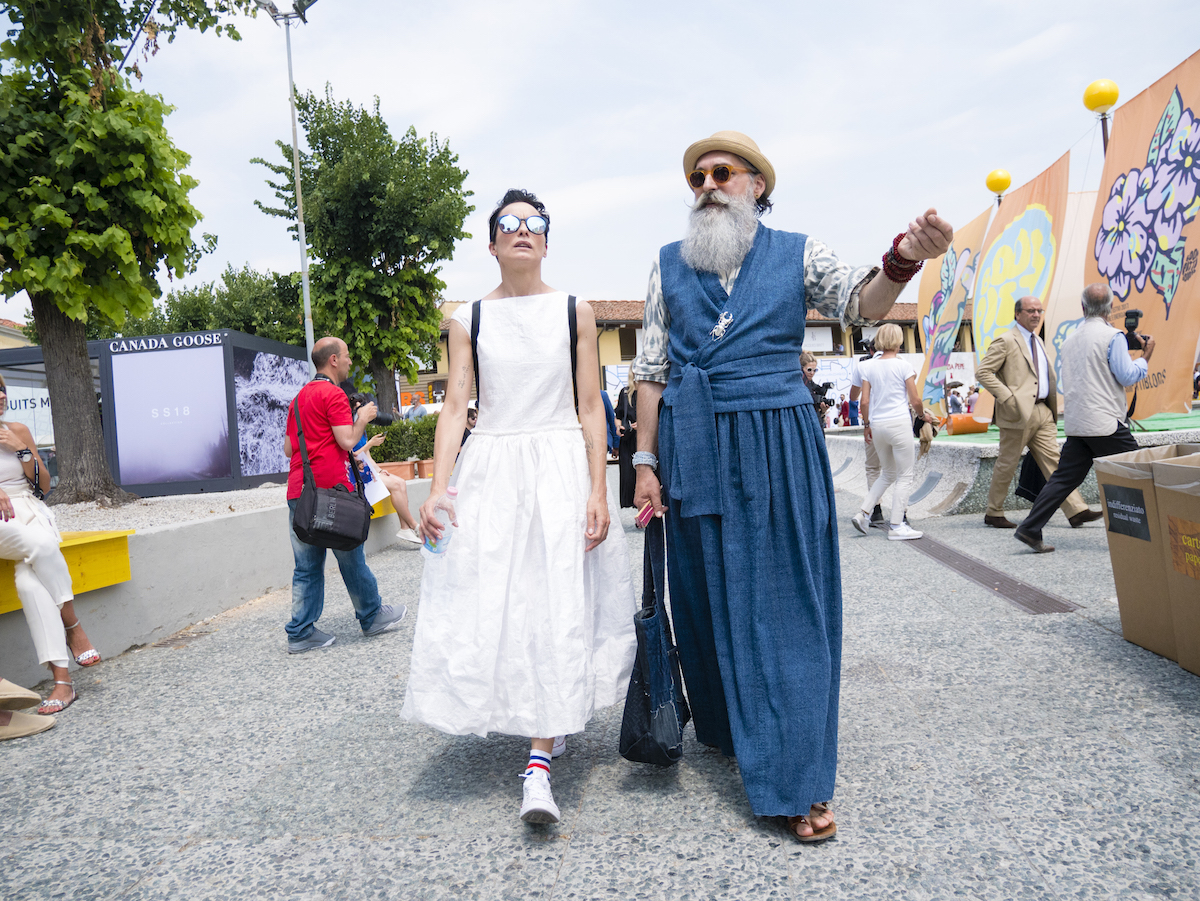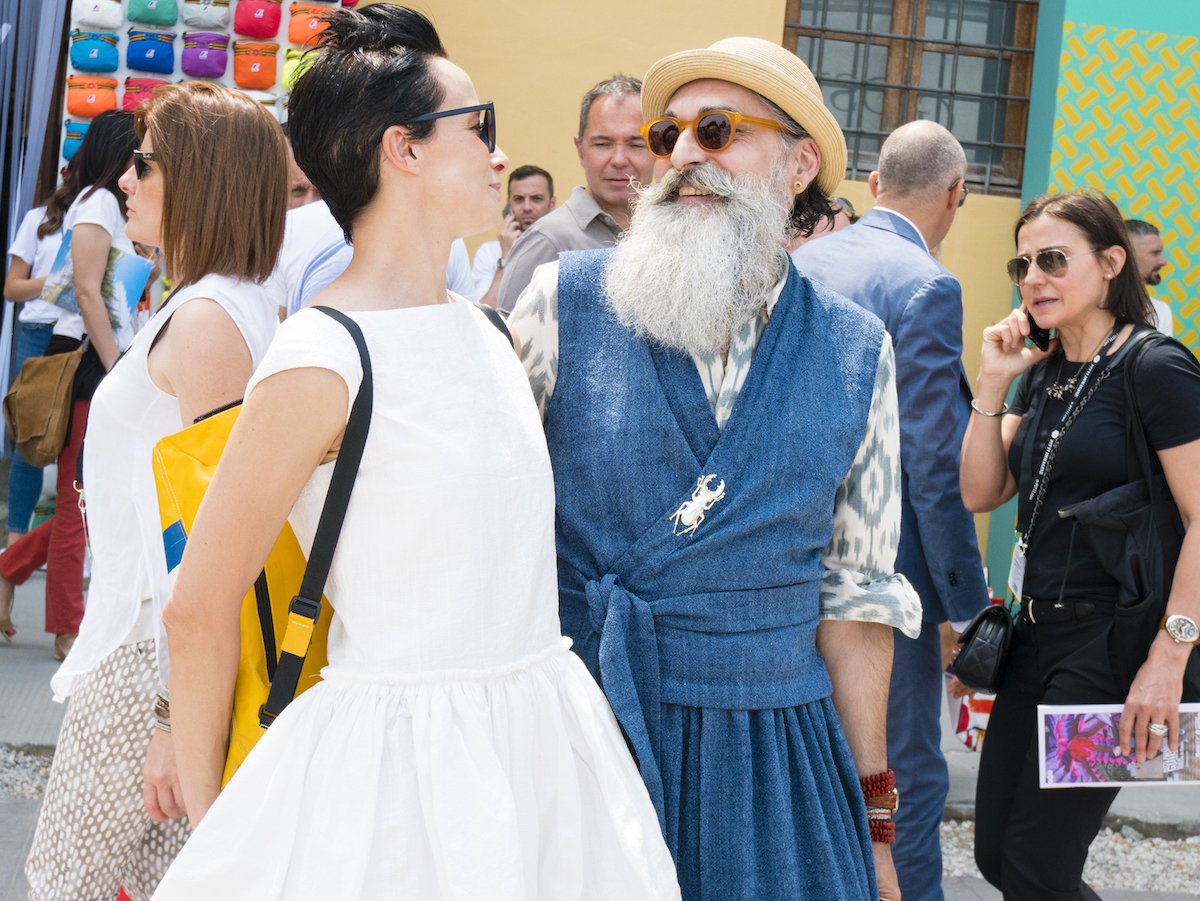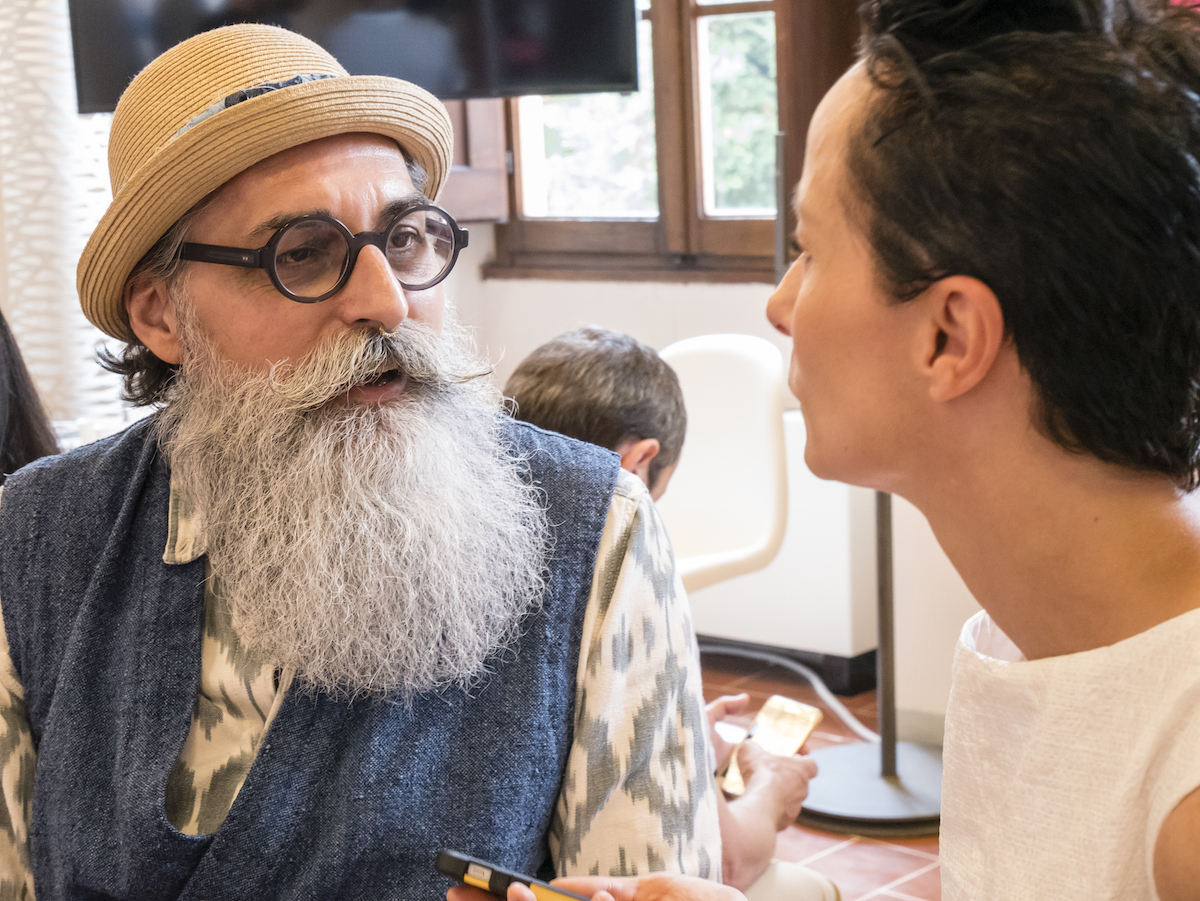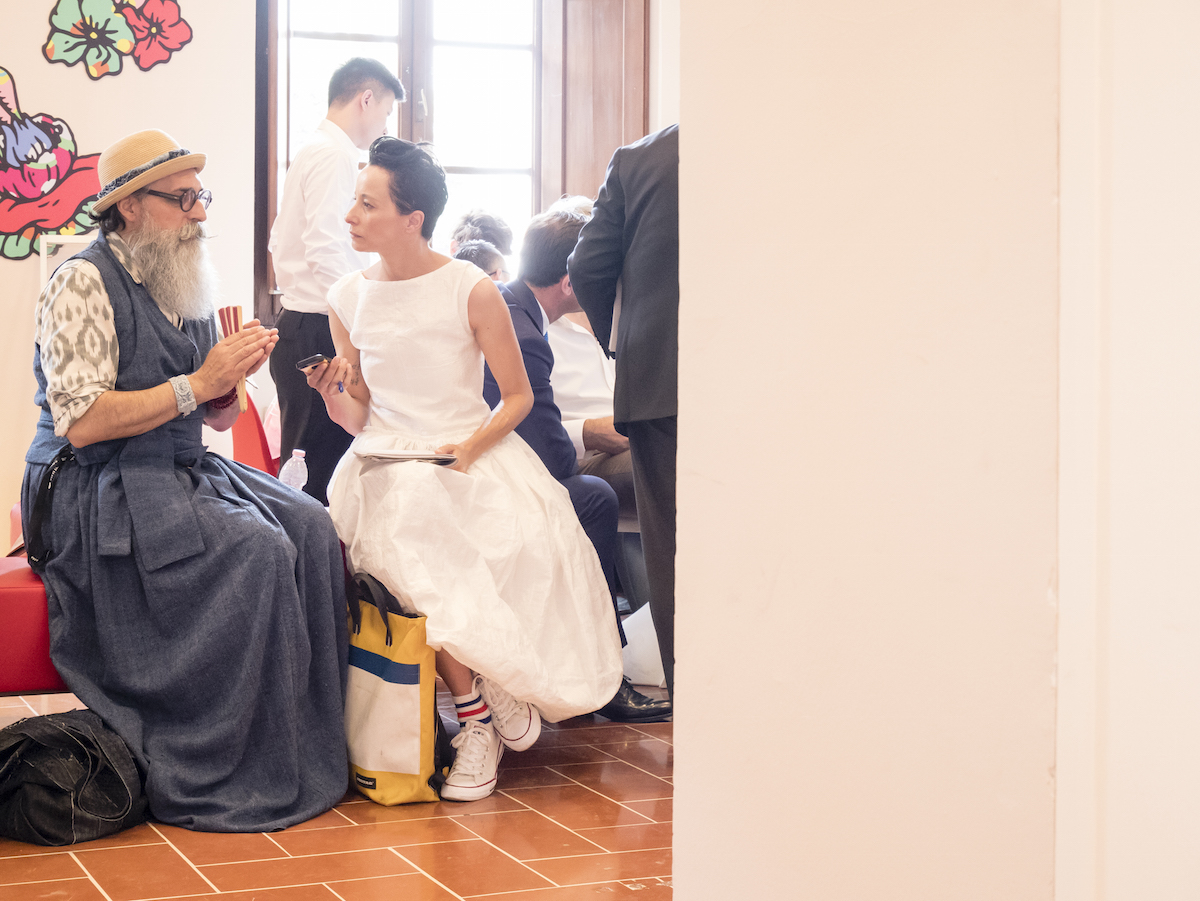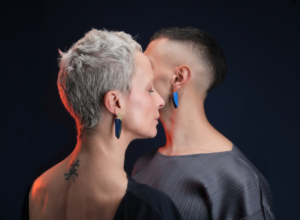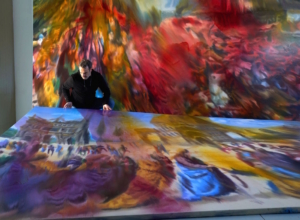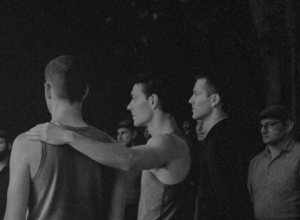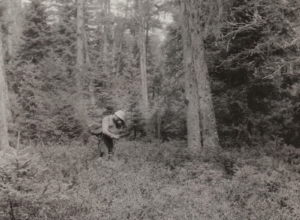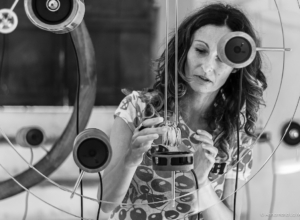Anche quello maschile è un caleidoscopio mondo in continua evoluzione che racconta una moda multiforme e variegata, libera di fluire tra ispirazioni diverse, testimone delle storie degli uomini e dei loro gusti, delle loro passioni, dei loro peculiari stili di vita e della loro vocazione internazionale.
Quella di Gerold Brenner, prima ancora di essere una storia di stile, è una storia di identità e carattere che muovendo dal segmento tradizionale della sartoria maschile si sposta nel tempo in un territorio più denso di sperimentazione e innovazione. Dopo gli studi di moda e l’attività di fashion designer per diverse grandi aziende europee collocate nella fascia media del mercato, all’età di 50 anni Gerold decide di cambiare vita, complice anche una certa noia subentrata nella sua professione, e sceglie di aprire a sé stesso e agli altri nuovi orizzonti.
“E’ stato 5 anni fa, mi sono fermato e ho deciso di dare un nuovo indirizzo alla mia esistenza, una nuova prospettiva per i prossimi 25 anni a venire. E siccome sono un grande amante del denim, un materiale che mi piace molto perché lo trovo vivo e cangiante, per prima cosa ho iniziato a creare delle borse utilizzando il tradizionale metodo di cucitura giapponese “boro” e “sashiko” dandogli, grazie alle mie radici che affondano nel mondo della sartoria, una connotazione assolutamente personale. Ma non solo, recentemente ho iniziato a indossare il kilt ed è stato il primo passo verso quel concetto di cui mi sono fatto promotore: la gonna per l’ uomo. Credo che sarà il progetto al quale mi dedicherò con passione nei prossimi anni. Ci sono alcuni designers, come Yohji Yamamoto per esempio, che prevedono questo elemento nelle loro collezioni maschili, ma sono casi sporadici. Invece molte persone quando mi vedono indossare la gonna mi chiedono: ma dove posso acquistarla anche io?”
Un desiderio di emancipazione e al tempo stesso la necessità di rispettare culture differenti, come quella dei Paesi africani per esempio, da sempre avvezzi all’uso dei caftani, o delle popolazioni asiatiche e orientali. Insieme a una riflessione sui confini di genere, sul maschile e il femminile e le loro differenze e la necessità di adattare al corpo di un uomo un elemento che nasce per assecondare le caratteristiche del corpo di una donna.
“Europa e Stati Uniti sono convinti che il mondo debba funzionare secondo i loro dettami, anche nella moda, basti pensare che hanno imposto a tutti gli uomini di indossare i pantaloni. E dai tempi della Rivoluzione Francese ad oggi nulla è cambiato. Quindi, come Marlene Dietrich ha sdoganato i pantaloni per le donne così io voglio sdoganare le gonne per gli uomini.”
Difficile attribuire una etichetta a questo uomo colto e poliedrico, di grande intelligenza ed esperienza. Indiscussa icona di stile a cui sia gli addetti del settore che i più semplici fruitori della moda guardano con grande interesse. Un hippy? Un gentleman? Un dandy? Tutto, un po’ di tutto, alla maniera di Gerold.
“Definirmi? Sicuramente non sono un hipster, anzi questa parola la detesto! Per me un hipster è una persona che segue la moda io invece, da influencer, la determino. Guardo avanti, più avanti della maggior parte delle persone e questo causa inevitabilmente un divario tra me e gli altri. Potrei raccontarti per esempio che un paio di ore fa, proprio qui al Pitti, due persone ridevano di me per il fatto che indossavo una gonna. Nel profondo del mio cuore sono un hippy che crede che l’amore, la pace e la felicità siano le cose più importanti. Così come il rispetto per l’ambiente che ci circonda e la natura. Sono decisamente un figlio dei fiori, contrario a qualunque tipo di guerra tant’è che domani indosserò un kimono che dietro, sulla schiena, ha scritte le parole di una celebre canzone di Marlene Dietrich e Joan Baez: where have all the flowers gone?”
Allo stesso modo credo sia importante essere dei gentiluomini. Essere persone gentili, gentili nei confronti degli altri anche quando hanno posizioni e pensieri diametralmente opposti.
Un territorio ibrido in cui arte, musica, moda e interior design (sebbene quest’ultima sia un’industria più lenta ad evolvere e più statica rispetto a quella della moda per i tempi strutturali di cui necessita) dialogano senza soluzione di continuità mossi dalla stessa connessione, sotto il grande ombrello di quello che è lo zeitgest, lo spirito dei tempi. “Perché se ti interessano le cose belle, ti interessano le cose belle” come a dire che la bellezza sta ovunque se si è capaci di guardare.
Uno spirito che premia le individualità nette, forti, quelle che non scendono a compromessi con sé stessi e non si piegano a regole predefinite.
“Mi piace mischiare le cose insieme e indossare anche vestiti di seconda mano. Stimolare la gente a essere creativa, come lo eravamo negli anni ’80. Oggi le persone sono più consumatori che creatori e gli stessi designer si preoccupano di più dello styling piuttosto che di essere dei visionari. Ed è a mio avviso uno dei grossi problemi di cui soffre questo settore.”
Un atto, quello del vestirsi, che non può prescindere dalla parola cura. La cura del corpo che deve essere vestito al pari della cura per gli altri. Il che significa, in altri termini, la necessità di orientare le proprio scelte di acquisto secondo un criterio di sostenibilità che tenga conto della filiera produttiva e delle sue implicazioni.
“Io penso che una persona sia mal vestita quando indossa abiti realizzati in qualche fabbrica del Bangladesh dove chi lavora è costretto a farlo in pessime condizioni. Non è una cosa che ha a che fare con il gusto, quanto a quello ognuno ha il suo e non è detto che il mio sia migliore di quello degli altri.”
Ma una cosa si che è importante: non uscire mai senza aver indossato il proprio sorriso. Ecco, questo alla fine è ciò che conta.
Desidero ringraziare per la cortese intervista Mr. Gerold Brenner – Facebook – Instagram
Io indosso un abito di Elle Venturini
Foto di Elisabetta Brian in occasione di Pitti Immagine Uomo
GEROLD BRENNER, THE MAN WHO WEARS THE SKIRT
D: Gerold, first of all, I would like to know something about you. Tell me, who are you? Who is Gerold? Tell me something about your field, your education and your interests.
G. I trained as a traditional bespoke tailor. When I was very young I studied fashion design, then I worked for about 25 (or 30) years as a fashion designer for big German and European companies, in the mid-fashion range, I would say. I have never been at the top in fashion. When I turned 50, I realized what I was doing was very boring; it was a decision I had made when I was 25, and had since learned all about this profession, so I said: you have to stop it. I tried many things last years because I wanted to find a new orientation for the next 25 years. When I get as old as my Dad is (he’s 93), then I will have had a lot of experiences. And then I began, because I am a denim lover – I love this material because it’s living, it’s died with indigo, it changes with time – I began with my bags and accessories using traditional Japanese boro and sashiko stitching, and transformed it with my roots as a bespoke tailor to Gerold boro. I love it.
Meanwhile I do the bags which I sell to people all over the world. I have customers in Japan, in the USA, and so on. In recent years, I have begun to wear kilts, and that was the first step towards the idea of skirts for men. I thought a great deal last years or about a man’s skirt. And I think that will be my passion for the next few years. I recognize that there are some designers, but like Yohji Yamomoto perhaps, they have one skirt in their collection, that is all. A lot of people ask me: Where can I get skirts? men’s skirts? For me it’s important to have some traditional tailor’s work, here in the front, because it’s a problem to have to lift all the clothes when we have to go to the toilet. We men have our needs, and this also brings together the pattern of a skirt and of trousers, because a man’s body is different from a woman’s body. For me it’s also a bow to other ethnic cultures. In Europe and the rest of the world, Europe and the USA, we think the world has to function like we do, and we want African people, the Asian or Oriental people, traditional people wearing clothes, wearing long kaftans and so on, to have to wear pants. Nothing has changed since the French revolution. So I think it’s time for men to get fair emancipation. Because like Marlene Dietrich, the famous German and later American actress brought pants to women, I want to bring skirts to men.
D: This is a very interesting project! You are not only investigating clothes, you are going beyond the traditional gender’s boundaries.
G. Yes, it is important for me to bring masculinity to the skirts, but I am also more and more engaged by the gender question. I am reflecting on what is man, what is woman. I think there are none because there are different kinds of men, different kinds of women, different kinds of genders, other men, other women. I accept every person for who they are but mainly the point is to have a masculine skirt.
D. Gerold, how would you define your style? Is there a definition? Are you a hippy, a hipster, a gentleman?
G. A hipster I am not! I hate the word hipster, because to me the hipster is a fashion follower, and I think I am a fashion influencer. Because I more live in the tomorrow, and I recognize that people do not understand what I am wearing, they never have all my life. And the gap is wide, because I am several years ahead of most people. Two hours ago, two people came here to the Pitti, to the fashion show, two men against me, and they laughed at me, a man in skirts, like “Oh, what’s that?”
D. And what did you say?
G. Nothing… Because those people are so narrow-minded, it’s beneath my dignity to talk to them. I don’t think I can open their minds. You know, on Facebook, for one and a half years I have been advancing my idea of having men wear skirts, and I recognize that I have stimulated a lot of people. They write to me: I never thought I could accept skirts in men, and now I am thinking about doing it. Because you show that it’s masculine, that it’s very preppy, and you ask who I am, what’s my style.
I think that in my heart I am totally hippy. I’m a child of the Flower Power. I am a pacifist. For me, Love Peace and Happiness is the most important thing; to be aware of the environment, of nature, and all those things. I think that it’s high time to stop the fight against nature. All the battles in the world, little ones between neighbours and the big fights in the world. I am totally a flower child. Tomorrow I will wear a kimono, that on the back has written “Where have all the flowers gone?”. It’s a song by Marlene Dietrich and also by Joan Baez: she sang during the Flower Power era. For me it’s time to take up this question again, because we don’t live in very good times.
So my heart is a hippy, but I also believe it’s important to be a gentleman. To be a gentle person, to be gentle to my opposite, to accept the opposite, to have honour in that sense. Therefore I think I am a mix between hippy, gentleman, and a bit of a dandy. So you can’t put me in one box, you have to open a lot of boxes!
D. That’s wonderful! So, how do you feel being considered an icon in the fashion industry? You are a very important influencer, it’s a responsibility, isn’t it?
G. It’s interesting that you use the word icon because I think about that more and more. I recognize that I have my very own style, and I think there are a lot of people in the world who don’t like it, but there is a little group that does like it. That’s wonderful for me. It’s a great honour to get all this consideration, and for me to be an inspiration for people to wear what they want, to be happy, to mix things, because I think this shirt is around 15 years old. I like to mix all things, I also wear a lot of second-hand clothing. To inspire people to be creative, to be creative like we were in the eighties. People are today more consumer than creative. A lot of designers today do more styling as designing, they are no visionnaires. And that is part of the problem of the whole business for me.
D. I know you are also a big traveller and you are still working in the Interior Design industry as an interior designer. So, every field seems to be strictly connected: art, fashion, interior design…
G. All this is connected under the big roof of zeitgeist, because it’s all a reflection of our time, and therefore shares a similar feeling. The interior industry is a little bit slower than the fashion industry, because the products have a longer life, and therefore it’s a little more, I wouldn’t say conservative, but a little more static and precise . Let’s see what will happen in the next years. But it’s very connected. And if you are interested in beautiful things, you are interested in beautiful things.
D. So, when do you think that a man is not well-dressed?
G. I think the most important is that he takes care of his own body. And I totally accept that there are human beings not interested in fashion. But it’s important that they take care of the quality and the process through which the clothes are made. Because for me sustainability is important and if they are produced by an awful company in Bangladesh, or something like that, with bad working conditions, then people are dressed badly if they’re wearing these types of clothes. But not the taste. The taste, I don’t know if my taste is good, perhaps their taste is good too.
D. If I ask you “never without”? I mean: never without denim? Never without a hat? Never without a pair of sunglasses?
G. Never without a smile! That’s the only important thing.
(and he’s smiling while answering)


